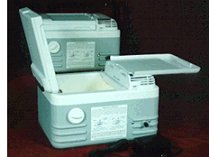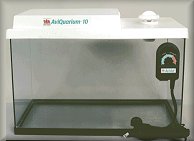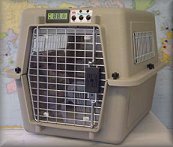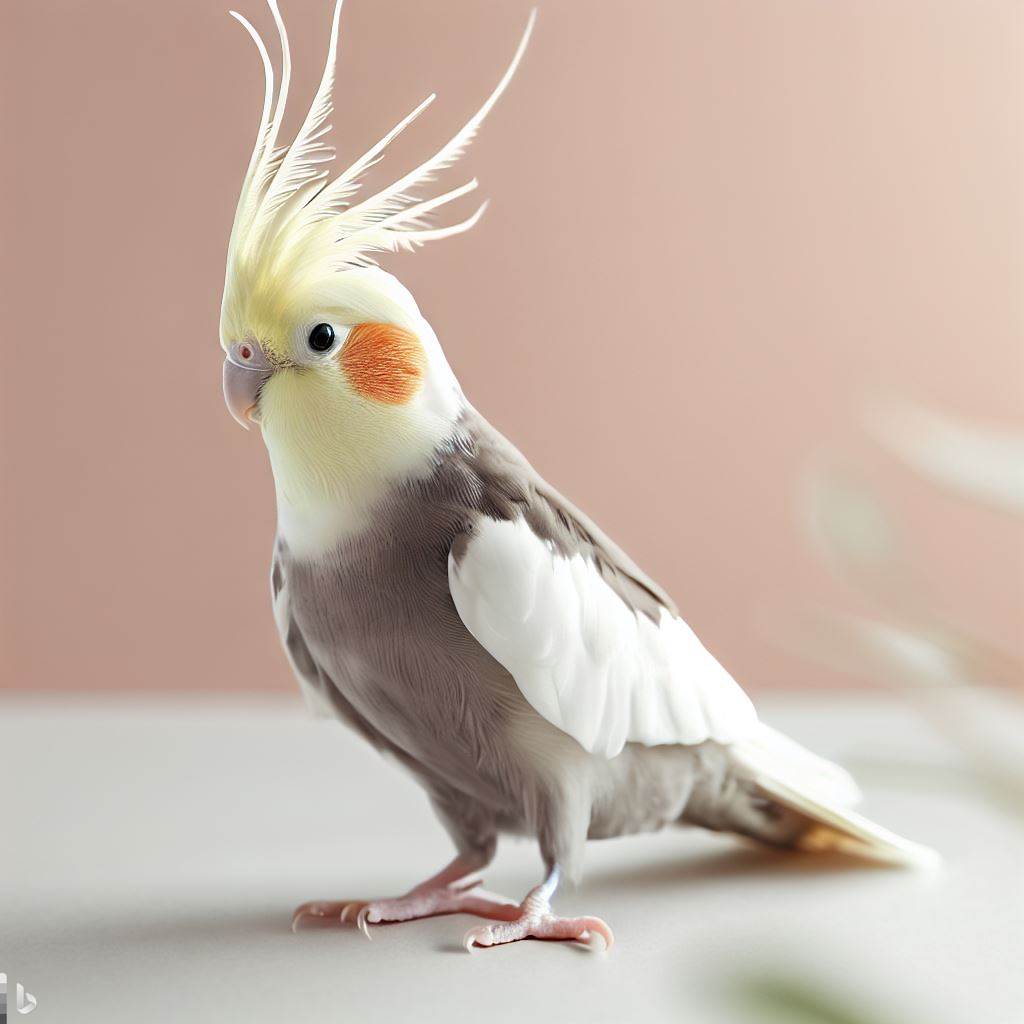
Why Brood Chicks?
Occasionally parent birds will refuse to brood their chicks. When the parents abandon the nest and refuse to feed the chicks, brooding is the only way for the chicks to survive. Many breeders also wish to handfeed and handtame their babies and will pull them from the nest.
Cockatiel chicks are altricial at birth meaning that they are hatched blind, naked, and helpless. At hatch they are unable to feed themselves or to control their body temperatures. It is therefore important that the temperature and relative humidity be monitored in order to provide the right atmosphere for the chicks to grow and thrive. Young chicks that are not fully feathered need supplemental heat as they are unable to thermo-regulate their body temperatures. Chilled chicks fail to do well and may have difficulties with slow crop. The problems that the chicks experience as the result of being chilled may be life threatening even after the chicks have been warmed sufficiently.
Anytime you pull the chicks from the nest for the purpose of handfeeding you put them in a brooder. Most chicks are pulled from 10 days to three weeks of age. Ten day old chicks are going to need more heat and humidity than a chick that is pulled at three weeks. The cockatiel chick at three weeks of age is normally fully feathered. While the chick doesn’t have as good control with regulating his body temperature he doesn’t need as much heat as the chick who is just getting pinfeathers.
Setting Up A Homemade Brooder
While I use and prefer a commercial brooder, there are homemade setups that work quite well. One of the most popular ways to set up a homemade brooder for tiel chicks is to provide them with a five to ten gallon aquarium. A heating pad is placed half way under the aquarium or taped to the side of the brooder. In that way, if the chicks become too warm they can move away from the heat source to a cooler spot in the brooder. You want the heating pad set on a medium setting. Pine shavings are placed in the brooder to a two inch depth and plain white paper towels are placed on top of the shavings. By doing this you are providing a surface that will give the chicks good footing within the brooder. Too slippery a surface may play a signicficant role in the development of splayed legs.
You will need to use a temperature and humidity gauge to check that the environment in the brooder is the best it can be for the chicks. Most pet stores that sell reptiles, have temperature and humidity gauges that will work in a brooder.
Some of the problems encountered with this type of homemade brooder is that maintaining a temperature that is right for the chicks is difficult. Chicks have more problems with heat related injuries such as dehydration. Chicks that are being brooded at higher temperatures need to have enough fluids to prevent the chicks from dehydrating.

The chicks need enough space to flap their wings without touching any of the other chicks in the brooder. This is especially important so that none of the chicks are injured. With a medium sized brooder you should be able to house 4-6 chicks adequately.
Various Types of Brooders
Cardboard boxes would be impossible to use as a brooder. The high urine output of chicks would make it necessary to replace the box every feeding. The organic matter would increase the possibility of bacterial growth and fungal spores. This type of brooder would be next to impossible to keep clean and chicks kept in wet damp conditions are going to be sick. It wouldn’t be easy to maintain a constant temperature and it could become seriously overheated while trying to keep the chicks warm enough.
Some of the ones that I like best on the market today are water brooders that use a heater like you would use in an aquarium or for reptiles. The brooder is made of plastic and has two vents on top for regulating temperatures. The unit for the chicks fits inside the unit for the heated water. The tank needs to be refilled as the water evaporates so that the heater remains covered with water. This brooder produces an adequate amount of humidity for the chicks because of the heated water. One problem that can arise is bacterial proliferation in the water, especially pseudomonas. The use of a water cleanser is advisable to prevent bacterial pathogens from causing illness in the nursery.
There is the potential for dangerously high humidity from the heated water that is used in the brooder. The vents should be used to adjust the brooder to provide for the needs of the chicks. One of the biggest problems is that changing the water in the tank can be quite difficult because the water makes the brooder very heavy and even harder to clean when filled with water.
Lets review some of the problems with homemade brooders such as cardboard boxes, plastic brooders, and aquarium setups. First you can’t control temperatures. Lights that give off heat may raise the temperature within the brooder to more than 120 degrees Fahrenheit. This literally cooks the chick. Excessive heat will cause the chick to dehydrate and dehydration is life threatening as it slows down the crop and most of the time results in crop stasis. The chick dies because the dehydration causes the digestive system of the chick to shut down. If the temperature is too cold for the chicks, the metabolism of the chicks slows down and results in sour crop. This makes digestion of the formula impossible. For the successful brooding of chicks you want a brooder that maintains a precise constant temperature which enables the chicks to digest their food normally.
Second it is difficult to maintain the humidity level that the chicks need. Air that is too dry and warm may increase the chance of the chicks dehydrating.
Third some of the homemade brooder setups are difficult to clean and disinfect. This puts the chicks at risk for viruses and disease. It is important to remember that the cockatiel chick has a very immature immune system which gets stronger as the chick gets older and is fully functional around three months of age. When choosing a brooder you want one that will provide a safe healthy environment for the chicks in which to grow. Thriving fat healthy chicks are a constant delight to any breeder and a good brooder makes the job a little easier.

Brooder Environment
Chicks
Chicks from the same clutch should be brooded together. You don’t want to mix babies from another clutch in the same brooder. There is too much danger of disease and viruses being passed from one set of babies to another. The same clutch can be housed in the same brooder without any problems as long as the brooder is large enough to house all the chicks in the clutch.
The chicks need enough space to flap their wings without touching any of the other chicks in the brooder. Don’t crowd too many in the brooder. When the chicks are very young, it’s a good idea to put them in individual containers about the size of a margarine tub. You can line the container with a soft wash rag and add some white paper towels on top. As the towels become soiled you remove them and replace them with fresh clean ones. This supports the chick and makes him feel secure. As the chicks get older and are more mobile you can remove the containers and allow the chicks to sleep on their tummies in the brooder.
Heat and Humidity
The brooder should provide adequate heat and humidity for the chicks. The chicks are totally dependent for food and warmth. When brooding a day one chick the brooder should be 97 degrees Fahrenheit with a relative humidity of 50% humidity. Chicks that are fully feathered can be brooded at 78-82 degrees Fahrenheit. But since the chicks are very young they still require some heat. These chicks are still not able to thermo-regulate their body temperatures as efficiently as an adult cockatiel. Chicks fully feathered will still need some heat, but can manage to do quite well at house temperatures of 75-84 degrees Fahrenheit.
You will want to create the same environment as the chicks have in the nest box for the first four weeks of life. This is the period before fledging. The chicks are kept at 40%-50% humidity until they are fully feathered. After this the humidity may be lowered to the humidity that is in room where the brooder is kept. The reason for not having a really high humidity when brooding chicks is that it increases the chance of developing fungal infections due to fungal spores as a result of the very humid conditions. The main problem with too little humidity is that the chick may dehydrate and have crop problems. The humidity can be decreased as the chicks feather out. Once the chicks have fledged, doing their solo flights, the humidity in the home is sufficient.
When using extra heat to bring up the temperature of the brooder, make sure that the chicks are not overheated. Lights that give off heat can raise the temperature within the brooder so much that it is fatal to the chicks. If you are using light to bring the temperature in the brooder up to normal for the chicks, you will want to place the light over the top of the brooder. Vigilance on your part will be required, so that it doesn’t become too hot for the chicks in the brooder.
When using light bulbs as a heat source, there is real danger of overheating the chicks if the light is positioned too close to the brooder. It is very important to closely monitor the chicks and check the temperature within the brooder. One danger with using light bulbs is that they do burn out. If the burned out light bulb is not discovered very soon afterward, it is possible for the chicks to become quite chilled. Young chicks may not do well with extremes in temperatures. The chicks may do poorly as a result of the fluctuations in temperatures.
Chicks that are panting, holding their wings away from their bodies are too hot. The temperature should be lowered by one degree and the chicks carefully monitored. If the chicks are still panting, the temperature should again be lowered by another degree until the chicks are comfortable. Chicks that are too hot may become dehydrated which causes problems with the crop emptying and causes an imbalance in the electrolytes. If this happens, it needs to be corrected as soon as possible, as it has serious implications for the chicks. Dehydration is one of the causes of sour crop and crop stasis which is fatal if not caught in time.
Equally as dangerous are chicks who are huddling together and shivering, which indicates the chicks are chilled and cold. Chicks must be watched for any signs of environmental discomfort, as the environment in which the chicks are housed is important to their survival. The temperature in the brooder plays a significant role in the chick’s ability to digest his food properly.
Light
One of the most important aspects of brooding baby cockatiels is that they must receive ample rest periods where they aren’t being hold, fed, or cleaned up. Chicks need darkness in order to eat and sleep so that they gain weight. It is important to remember that when the chicks are being brooded by mom, they are in a dark nest box and mom is covering them. So her chicks are in almost total darkness. This is the way that nature intended that chicks be brooded until they are ready to fledge.
Newly hatched chick’s eyes are very sensitive to light. The eyes open between the seventh to the tenth day. Chicks are not exposed to high levels of light in the wild until between three and four weeks of age, the time that they fledge. Too much light at very young ages causes the chicks to be very active at a time when they need the calories they consume for weight gain. With too much light, the chicks are using their energy for play and socialization at a time when the calories are needed to support growth of vital organs, muscles, bones, and tissues. Chicks should be allowed to have the best possible weight gain. Brooding the chicks in darkness is most assuredly going to retard the socialization of the chicks. However the weight gain is much more important to the chick’s survival.
Therefore what is needed is that the chicks eat and sleep, gaining the weight needed to support growth and sustain life. After the chicks’ have fledged, the daylight hours can be increased slowly to eight to ten hours of daylight, being sure to allow the chicks time to rest. Just like any human infant needs multiple naps during the day, so cockatiel chicks should be allowed to have large periods of time when they are resting and sleeping.
Chicks are not ready to perch before they are six weeks of age. Chicks this young are very clumsy and are still learning how to navigate. Chicks that are using calories for perching are at a disadvantage because the food they need to grow and support life is being used in perching. Growth and weight gain are an essential part of brooding cockatiel chicks and it is the responsibility of the handfeeder to provide all that the chicks need.
Nesting Materials
Using a good substrate is critical to the health and well-being of your chicks. It is just as important to have the appropriate nesting material in the brooder as it is in the nest box. Young tiel chicks need nesting material that provides traction and support for their feet and legs. Slippery surfaces such as tissue paper should be avoided, as these may contribute to the development of splayed legs.
Respiratory problems may result from using sawdust or cedar shavings. Every effort must be made to use a nesting material that will not cause problems for the chicks. Impaction of the crop is often the result of using wood chips as a substrate. When this happens it is serious and requires the immediate attention of an avian veterinarian in order to save the chick’s life. Malnutrition may occur in chicks who are filling their crop with nesting material. If the chicks are doing this, it would be a good time to review whether the chicks are receiving a diet that is deficient in nutrients or if there are other complications which may be causing the chicks to eat the substrate. Crop impaction or malnutrition can be prevented by keeping the chicks away from eating the nesting substrate.
Cleaning the Brooder
When cleaning the brooder, the chicks can be put into a large bowl which keeps them from getting injured outside of the brooder. You can use a bowl, a paper bag, a cage without a grate in the bottom, or a cardboard box. You want something that will keep the chicks safe while you are disinfecting the cage and adding fresh substrate to the brooder. When disinfecting the brooder you will want to work as quickly as possible so that none of the chicks become chilled. It is wise to have all the necessary supplies together so that there isn’t any time wasted in getting the job done.
Advantages and Disadvantages Of Brooding Chicks
One of the biggest advantages is the opportunity to raise very tame healthy pets. When brooding chicks there is the added advantage of preventing disease being spread from the parents to the chicks. It is possible for the parents to transmit crop or bacterial infections when feeding their hatchlings. Since young chicks have very immature immune systems this may have a profound effect on the survival rate of the chicks. Cockatiels that are subclinical for disease may, under stress, become clinical and actively shed viruses or diseases. During reproduction, the parents are highly stressed.
Polyoma virus may be stress related and often is associated with cockatiels that are overbred. This is an excellent reason to prevent your tiels from producing more than two to three clutches in a year.
One of the major disadvantages to brooding and handfeeding chicks is the amount of time required to do the job successfully. This is a labor intensive operation which requires multiple feedings, usually from 6am til midnight. And the handfeeding to weaning process can take up to ten weeks.
Cleaning and disinfecting of handfeeding utensils with every feeding and the cleaning of the brooder with every feeding are more work. The crop empties faster when more water is added to the formula. More water increases the urine output. Soiled wet towels should be removed and fresh clean bedding added to the brooder. Chicks that are laying in or on wet organic matter may have problems with bacterial or fungal infections. The brooder should be thoroughly cleaned and disinfected once a day.
Brooding chicks takes time, energy, and resources. To be able to do it responsibly, you will need to have an adequate brooder setup with the necessary supplies. While the equipment helps, you will need to be ever vigilant to monitor the health and well-being of your chicks. There is much to learn when trying to breed cockatiels responsibly. Every step along the way must be planned so that when you encounter a problem you will have the solution right in front of you. Producing healthy, happy, fat, pet cockatiels who love and are loved by those who care for them is our ultimate goal. Wishing you much success in breeding your cockatiels and may all of your eggs be fertile ones.


thank you very much